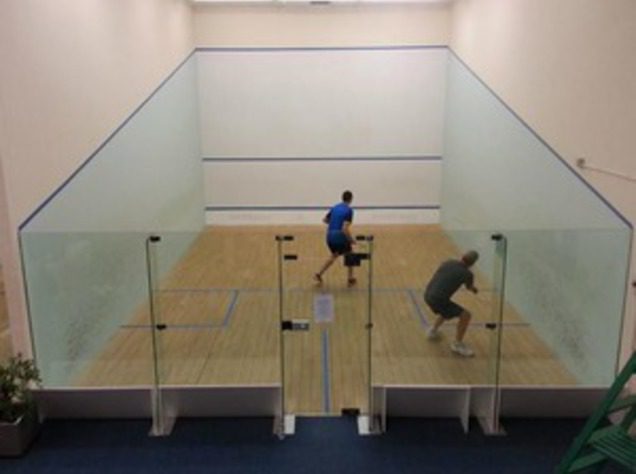Squash has exploded in popularity over the past few years as a youth sport. Teaching your child the fundamentals of the game at a young age will give them time to develop as a squash player and can lead to college recruitment.
Squash can be easily picked up by young athletes who have developed hand-eye coordination from other racquet sports like tennis or racquetball. Understanding the rules of squash is an important first step for young athletes making the switch from another sport.
The Court
Squash is played on a rectangular court with four walls. Three of the walls are coated in white plaster while the back wall is glass. The wall directly facing the glass has three horizontal lines across it. The first and highest line, which is close to the ceiling, is called the out line. The ball cannot be played above this line. The second line is called the service line. When a squash player serves the ball, he or she must serve it above this line. The third line designates the space between that line and the floor, also called the tin. This area is made of metal and will resonate loudly when a ball is hit against it. This area is out of play. On each side wall, there are horizontal lines at the same height as the out line, and balls cannot be played above them. The floor also contains a series of markings. There are two service boxes as well as a half court line. When serving, a squash must keep one foot inside the serving box. The opposing player must be on the other side of the half-court line.
Rules
The objective of squash is to cause the ball to bounce twice on your opponent’s turn or force them to make an error. The rally starts with a player serving between the out and service lines. The serve must also come back and land in the quarter of the court their opponent is standing in. A rally continues until the ball bounces twice on one player’s turn or a player hits a ball out. Players are allowed to play the ball off any wall as long as it is below the out lines. This includes the back glass. Players can also hit the ball directly out of the air.
Scoring
Collegiate squash has recently adopted the Point-a-Rally scoring system. This means that the player who wins the rally is awarded a point. Previously, you were only awarded points when you won the rally on your serve. Squash games are played to 11, and a match is either best of 3 or 5 games. Points can be disputed and replayed if one player feels the other has gotten in their way. This is called a let.
Squash can be a very valuable game for youth athletes to learn. Racquet skills developed from other sports can be easily adapted for use in learning squash. If your child is interested in learning more about the sport of squash, be sure to check out the rest of our squash articles and coaching resources.
CoachUp is the safest and easiest way to find a private sports coach. With our 100% money-back guarantee and vetted coaches, anyone can achieve their full athletic potential. Find your perfect private coach today and become the athlete you want to be!
How useful was this post?
Click on a star to rate it!
Average rating 0 / 5. Vote count: 0
No votes so far! Be the first to rate this post.



